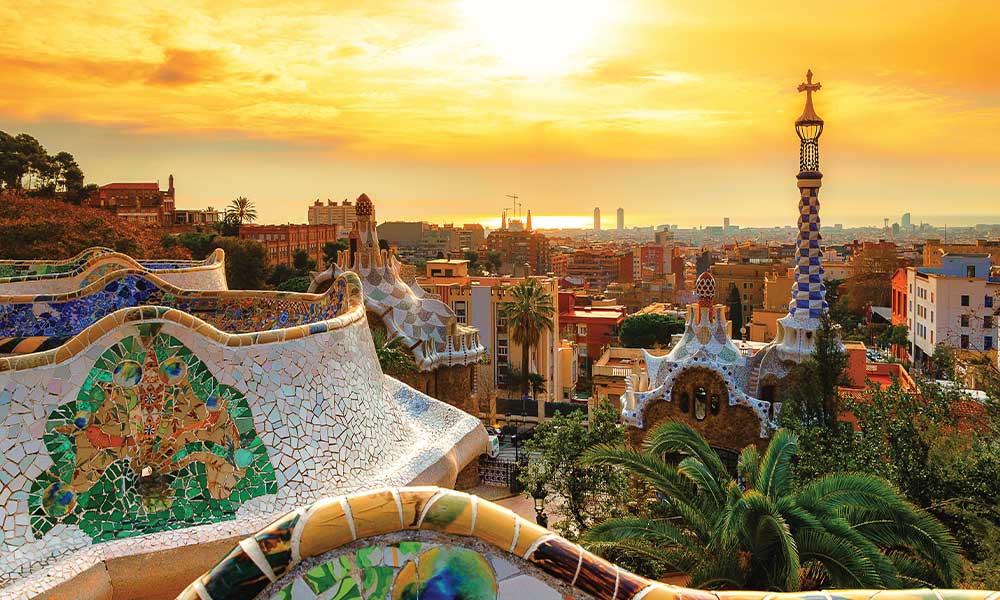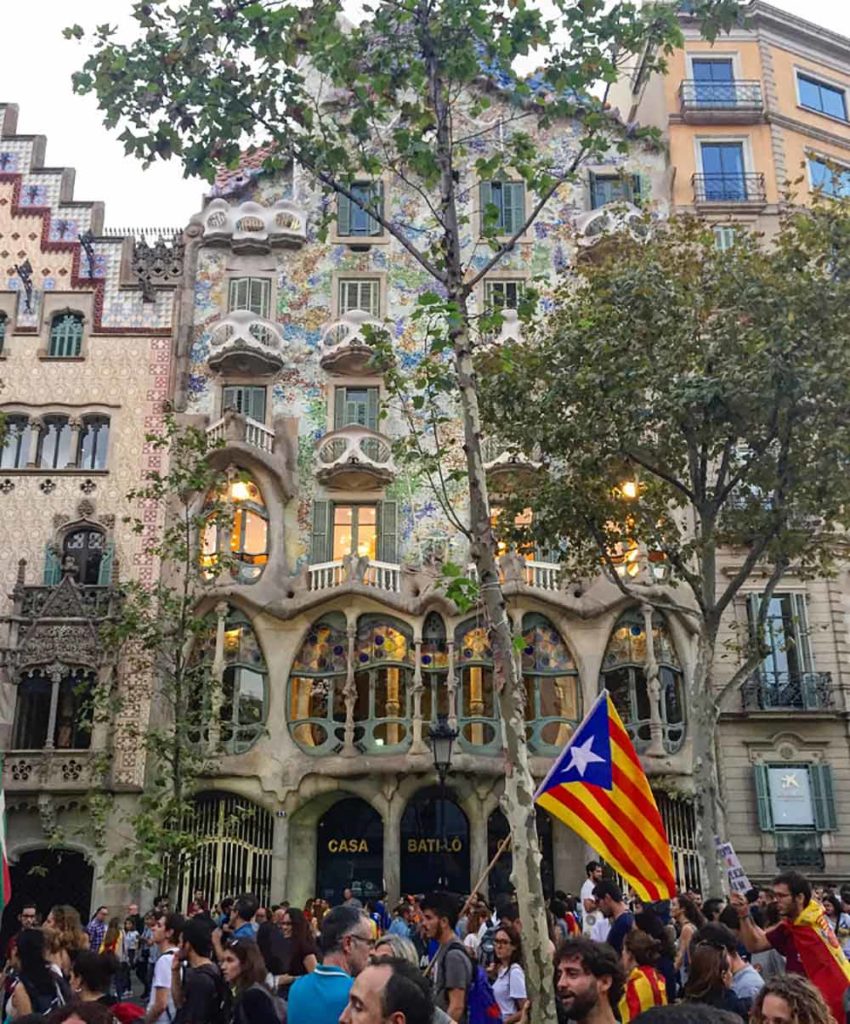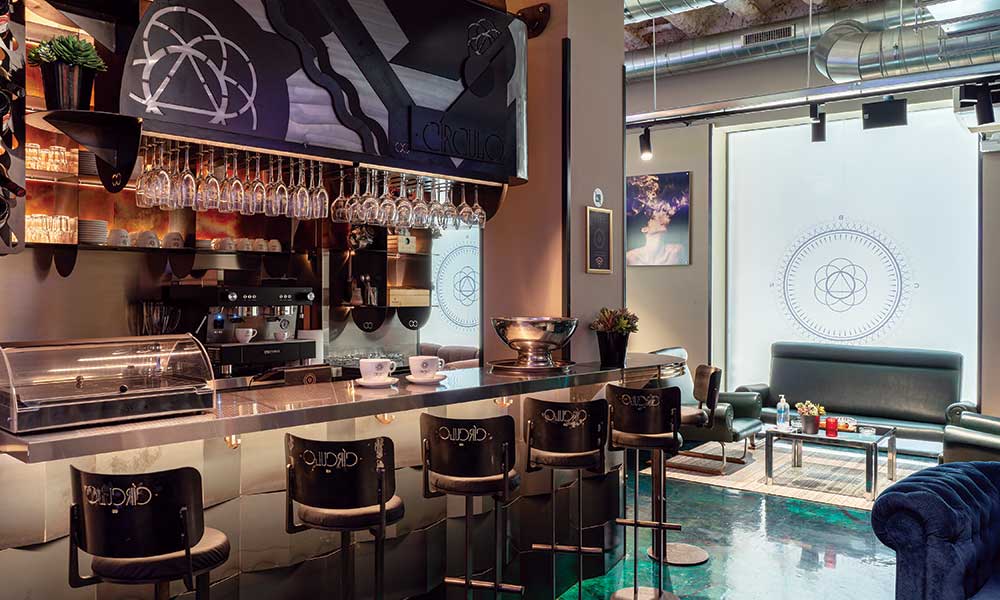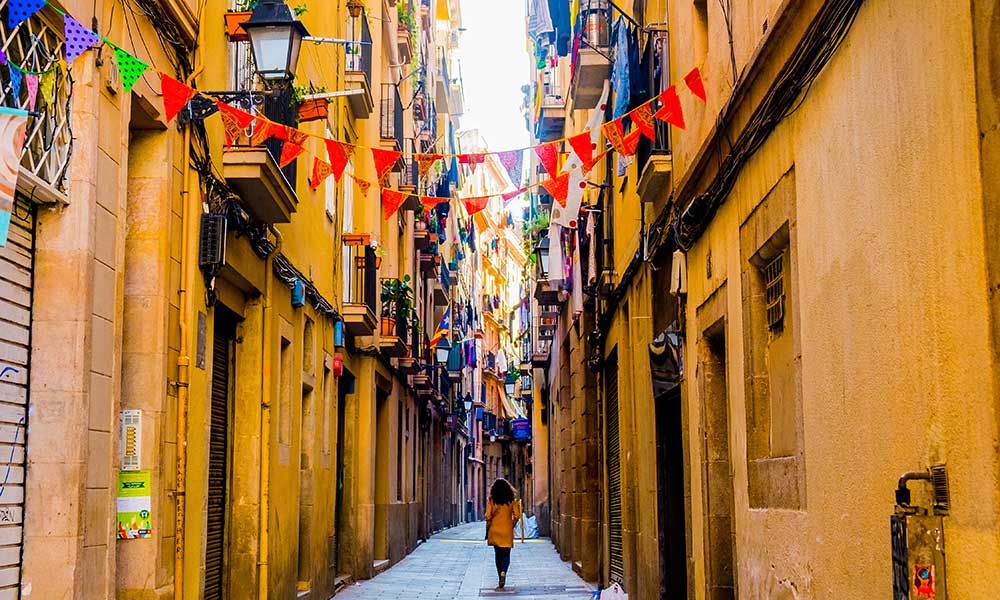
In The Magazine
Barcelona: Back From the Brink
Barcelona: Back From the Brink
In a “Letter From Barcelona,” the Catalan culture capital’s weed-friendly offerings are explored even as the pandemic lingers.
“This is silly,” I remember saying out loud while hitting a joint in Barcelona. It was six or seven years ago, and I had just joined my first cannabis club in the city, Círculo.
It’s still open near my friend Lucy’s apartment in Barcelona’s El Born neighborhood. These days, it feels quaint, a bit dated—already a relic of its time. But back then, it was a genuine revelation.
“We can just light joints here?” I remember thinking. “We’re allowed to do that inside?”
The answer was, mostly, “yes,” even though cannabis wasn’t technically legal for medical or adult-use in Spain. Today, Barcelona is home to some 225 members-only cannabis lounges called asociaciones (associations), which exist in a legal grey area. Back in 2000, the clubs started popping up as a result of a now-lauded legal analysis, which revealed that in the context of existing Spanish legislation, asociaciones could exist in which members would be able to obtain cannabis for personal use. Spain’s Supreme Court ruled that possession of any size wasn’t illegal if it was for personal use or part of a nonprofit.

At the time, a smattering of nonprofit asociaciones already operated private cannabis clubs in Spain. Their framework spread to other countries, serving as an early model for how it could be done. The post-2000 wave of clubs expanded on this model and was centered in Barcelona, which had the friendliest regional government toward cannabis. Today, all of Spain’s asociaciones are set up as nonprofits, operating within the margins of that ruling.
Basically, it’s legal to smoke weed in Spain, especially for those on private property. Growing for personal use is permitted, as is the sale of seeds, but selling and buying is strictly prohibido. This means that in the clubs, payments are “gifts” or “donations,” y’know, because it’s a nonprofit. The words “money,” “buy,” “sell” aren’t allowed. Everything is an exchange or otherwise freely given. One donates at the front desk after entering in a likely unmarked door from the street. Credits are added to a key fob or card, which is then scanned inside the club. There’s no commerce. At least that’s the theory.
The reality is that, like so many other rules in Spain, the cannabis laws aren’t enforced with a heavy hand. Many clubs, which are only supposed to accept Spanish residents as members will be all too happy to accept a tourist’s Airbnb or hotel address as well.
They’re also incredibly patient but firm with tourists, like me, who momentarily forget the rules only to blurt out that they’re buying fat California nugs that mysteriously popped up in a nonprofit cannabis club on the Mediterranean coast.
“Hey, no!” said Maria José, a budtender from Argentina. She gingerly waved her finger in my face while her eyes widened. I was out of practice—I spent the first two COVID-19 years in California, where I live, blissfully buying weed and talking about it openly. The vibe in Barcelona was chill, as it always was, but that doesn’t make cannabis actually legal. Discretion still trades at a premium in this beautiful country, even if weed prices have become more reasonable while quality has improved.

In March 2022, I decided I’d visit as many clubs in Barcelona as my wallet would allow. Thanks to the global pandemic and my divorce, I hadn’t been to Barcelona since November 2019. I was itching to not only visit the city, but also to check out the first Spannabis, Europe’s most important cannaconference, in three years and experience this dynamic city’s club, cultivation and hash scene. I wanted to visit Terps Army, which is a Barcelona outpost of the famed Amsterdam coffee shop, as well as Cookies, which is an official location of the California cannabrand started by San Francisco rapper and entrepreneur Berner.
I reasoned that visiting at least three or four more was reasonable for a week-long visit. The membership fees at the asociaciones vary, especially depending on location and clientele. Though Círculo, my mainstay club, is in a touristy part of town, it’s older and dingier than its newer counterparts. Its membership is an affordable 20 euro per year. HQ, in the also touristy L’Eixample neighborhood, clocks in at 50 euro, though it’s decidedly more upscale and offers much better weed. Still, it was clear that different subcultures within this already mostly underground scene were emerging. A type of choose-your-own-adventure, but for cannabis.
“Things have really blown up here,” I said to Soklak, a French street artist and rapper who’s also the creative director of CRTFD, a California-born cannabis lifestyle brand that operates clubs in Europe, including Barcelona. “It feels different, even just since COVID hit.”
“It’s true, things really have changed,” Soklak said, taking a puff of a long spliff he had just rolled and exhaling into the air above him. “It’s been recent, too.”

Soklak’s tall, thin and, to me, looked like a casually dressed Daniel Craig. Quiet and thoughtful, he lit up when I was able to connect the street art on display in the club with the city’s wider graffiti, skate and anarchist culture that churned in Barcelona’s subculture for years. The elements were interwoven but distinct and cannabis coursed through all of it. “That’s exactly what we’re trying to do here,” he said. “Bring together art and cannabis culture, because they naturally belong together.”
Soklak explained that even as culture capitals such as Paris stayed “dead” as far as their attitude toward cannabis, and weed-friendly destinations such as Amsterdam continued to crack down on gains made in legal cannabis sales and consumption, Barcelona is well positioned to take advantage given its chill attitude and second-to-none club culture allowing the city to take over as the top European destination for cannabis aficionados.
Add to that a perfect perch on the Mediterranean Sea, as well as national access to the African continent at Gibraltar, which sits at the border with the robust cannabis-producing Morocco, and there’s a supply chain from seed-to-sale ready to explode. A healthy supply also comes in from the US, plus, there are state-of-the-art indoor grows in Catalonia producing bud that would make any American do a double-take.
Other visiting US residents, apart from me, also noticed how much things had changed in recent years. Nathaniel Pennington, head of the legendary Humboldt Seed Company, summed it up at the Spannabis conference by telling me, “Business is good. Very good. I mean, we have employees here!” while motioning to some of his Barcelona-based staff members.
He’s right. The point stands on its own.
Back at the asociaciones, Roger Volodarsky, CEO of electronic hash gear maker Puffco, was downright giddy looking around at the crowds inside the clubs. For starters, they were made up of mostly men, which he acknowledged would be nice if it changed, but we agreed it wasn’t likely to happen any time soon. Still, a huge shift was happening among these men. A bunch of them were dabbing—something that was genuinely quite rare to see on any given day in any club in Barcelona, even just a few years ago.

Hash culture is big in Barcelona, but traditionally so, with big bricks and temple balls dominating. Apart from that, flower is king, but often more expensive or in shorter supply, so spliffs with tobacco are popular, too.
Dabs—the way we experience them in the US, in particular—are brand new territory. Puffco hasn’t made its big push into Europe quite yet, but Volodarsky told me that was about to change.
“Europe has loved hash for a really long time, but this new version of hash centered around water hash, rosin and BHO that’s become popular in the US, has really started to take off in Europe,” Volodarsky said while we chatted in HQ Barcelona, enjoying joints.
Volodarsky says that, since it’s still early days, the old dab tools of nails, quartz bangers and torches is how it’s done. Obviously, he sees a huge opportunity for his business. “This market is being primed for the Puffco Peak,” he told me while a Fidels hash hole joint was passed back and forth. Fidel sat just to our right, eclipsed by a low-hanging hash haze.
Elsewhere in the city, things were buzzing, albeit quietly. Tourism has collapsed since the onset of the pandemic, which depressed the local economy. Barcelona has a long, fraught history with its visiting vacationers who have simultaneously filled the city’s coffers while displacing residents and ushering in other social ills. Cannabis stepped in where COVID-19 created room. Spain’s grey-legal cannabis industry is now thriving due to low risk of serious jail time and good profit margins (thanks to what criminalization risk still exists); a mostly cannabis-tolerant population; demand elsewhere in Europe and growing intra-European travel.
I’m so glad beautiful Barcelona gave me so many reasons to happily return to the land of my not-so-distant past.
This story was originally published in the print edition of Cannabis Now.





















